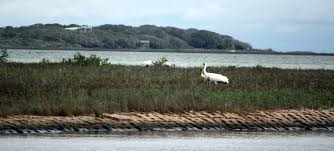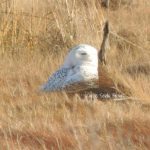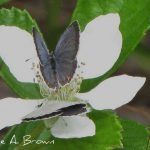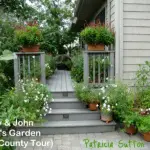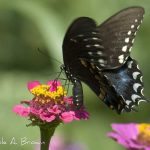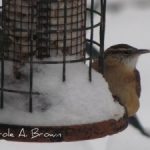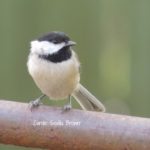Habitat Loss due to Human Action is the Number One Cause of Species Decline
We humans have an extraordinary propensity for building new things: shopping centers, malls, condos, office parks, suburban subdivisions, roads, parking lots, etc. This need to have more and more is really not a great situation for the wildlife that were thriving until we bulldozed another lot to build yet another Walmart or Starbucks. Every time we do this we lose more wildlife habitat.
We must take the landowner’s version of the Hippocratic Oath: “First, DO NO HARM.”
Harmful actions include use of enormous amounts of fossil fuels, overuse of pesticides, herbicides, and chemical fertilizers, mismanagement of stormwater and plant debris, excessive irrigation, soil compaction and erosion, and introduction of invasive species.
We need to stop thinking of our gardens as a collection of plants, surrounded by a vast lawn, but of our properties as an ecosystem that needs our help to become healthy for us, the environment, and our communities.
Because we have taken so many habitats away, now it is time to give some back. Every one of us can take responsibility for the health of the ecosystem that is our own property. As more of us become responsible landowners, we have the capacity to make positive changes that will benefit the wildlife with whom we share our land, and with whom we owe a great debt.
Doesn’t the government protect land?
Yes, land is protected by federal, state, local, and private organizations. But the amount that is protected is just a drop in the bucket. Of all the available land, 80% is owned privately and only 5% is protected. That means that private landowners are crucial to any conservation effort.
Restoration ecologists teach us that in order for these protected lands to make a difference, they must be large, close together, and interconnected. The reality is, very little of our protected lands meet these criteria. And that is where your property fits in. When all of us take action we provide connections from our land to protected land. Together we can create larger and larger blocks of healthy habitat.
Another problem in expecting our protected lands to also protect wildlife is that many of these lands are subject to “multiple use” clauses, meaning that some of this land is logged, mined, hunted , used for ATV and snowmobile recreation, and used as pasture.
Many of these lands are becoming overrun by invasive plants which outcompete and displace native plants. For example, my local National Wildlife Refuge (John Heinz) in Philadelphia is a perfect example of what NOT to plant. There are far more invasive plants, which provide very little resources for wildlife, than there are native plants.
Little things can make a big difference
Every small action we take can make a huge difference for healthier ecosystems and our local wildlife. Here are several examples of little things that would mean a lot:
- Install a raingarden
- Reduce the size of your lawn
- Plant more native plants
- Put in a green roof
- Plant host plants for butterflies
- Plant fruiting shrubs for birds
More From Ecosystem Gardening:
Submit your review | |

